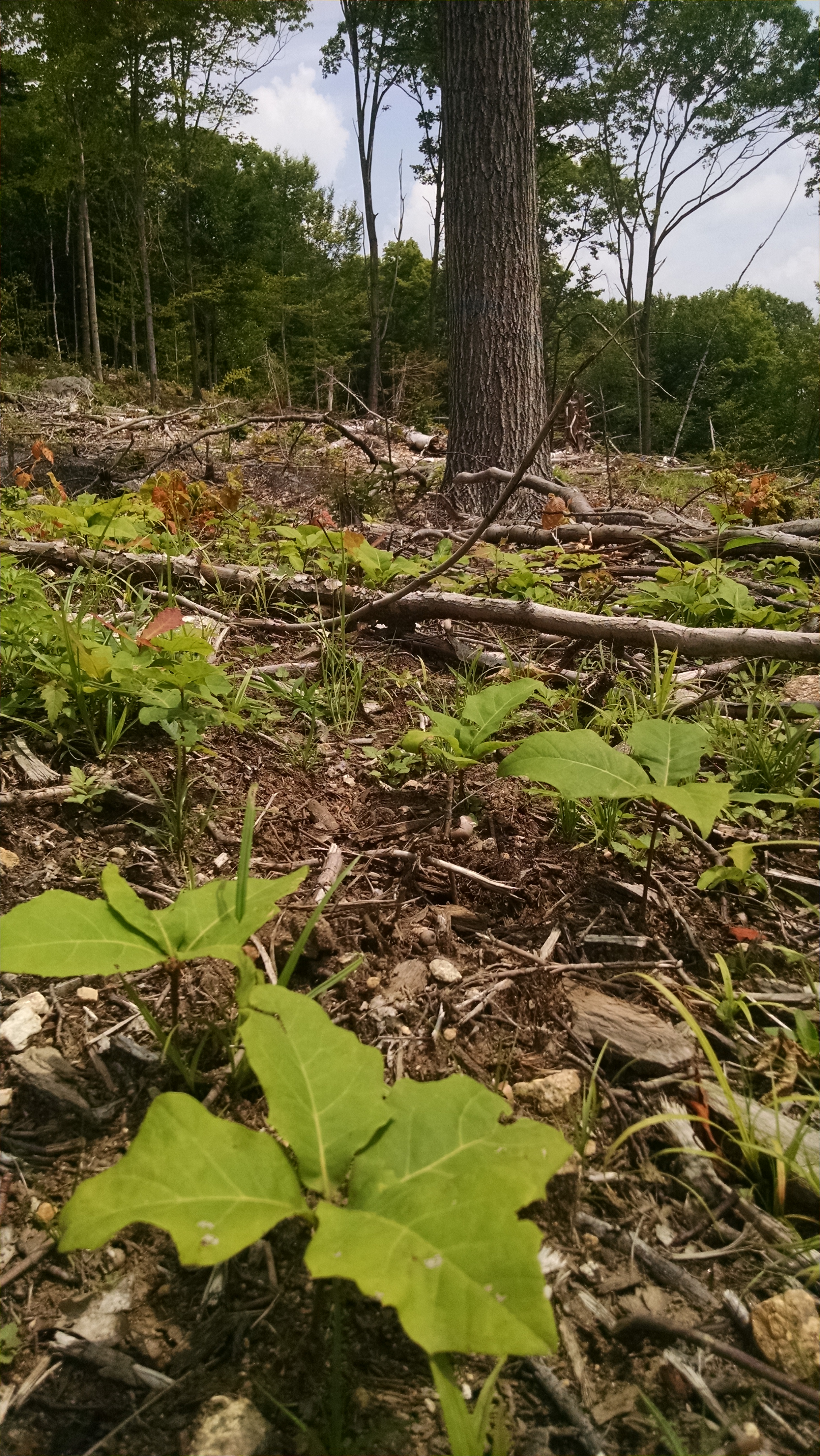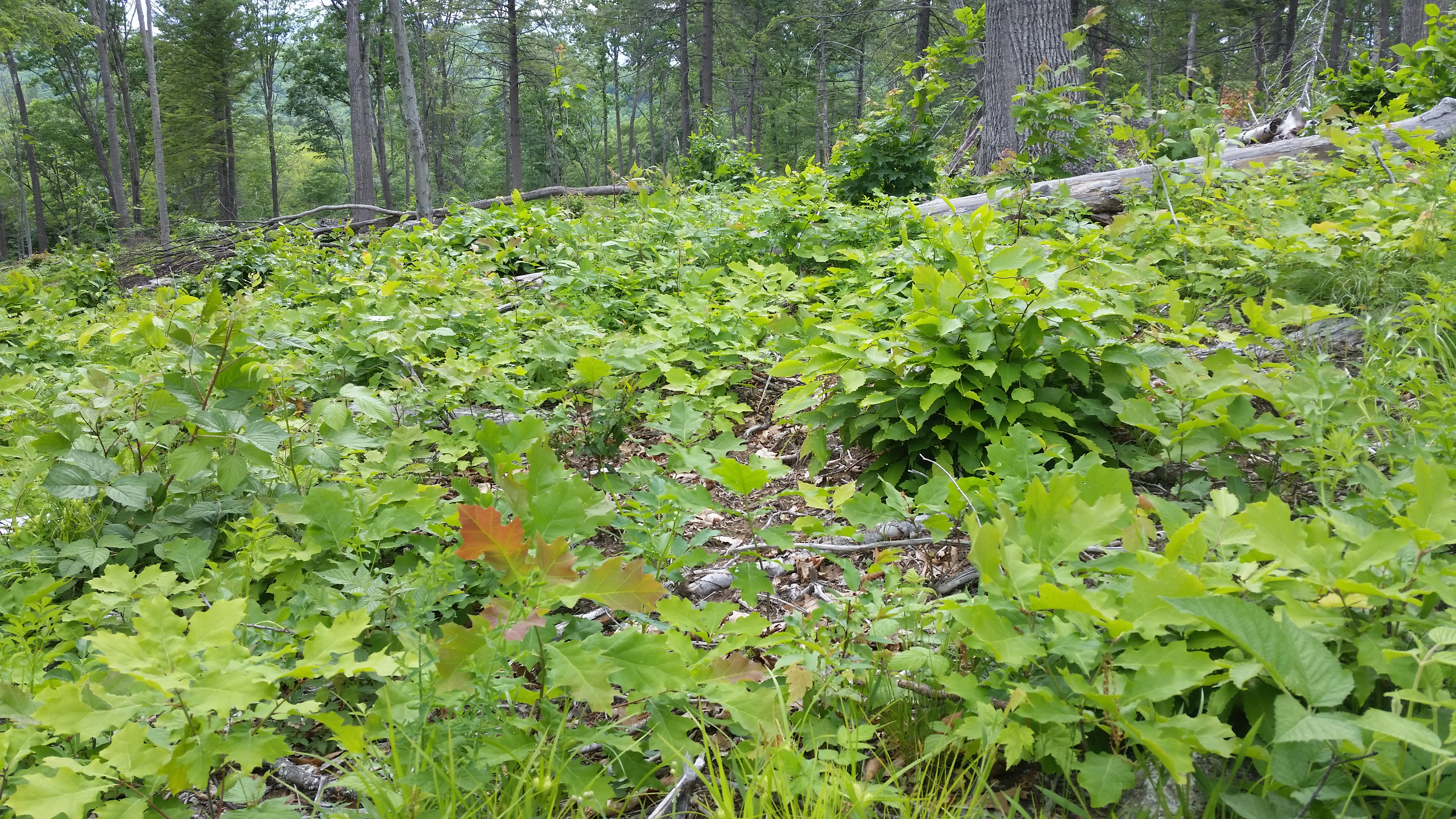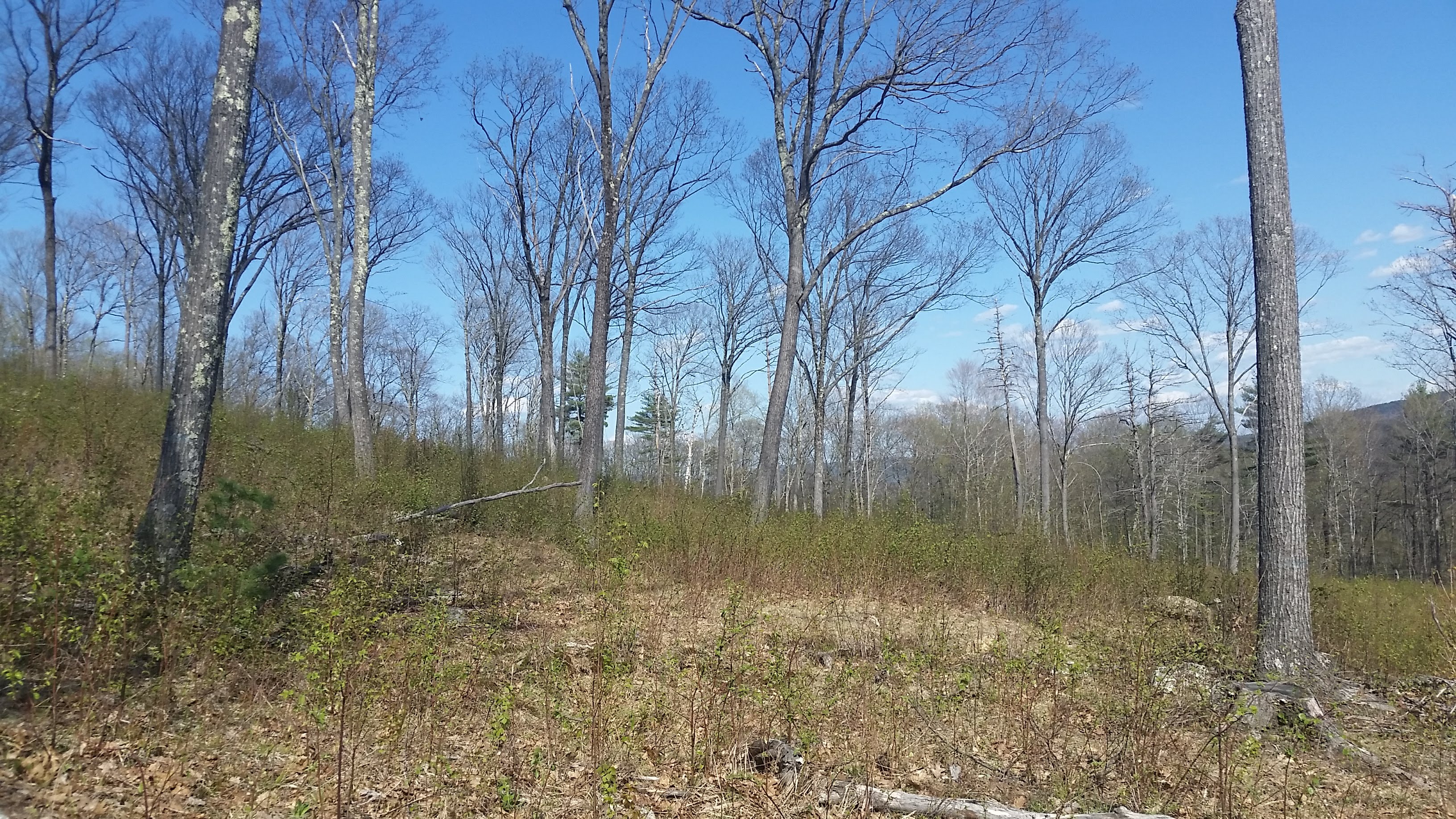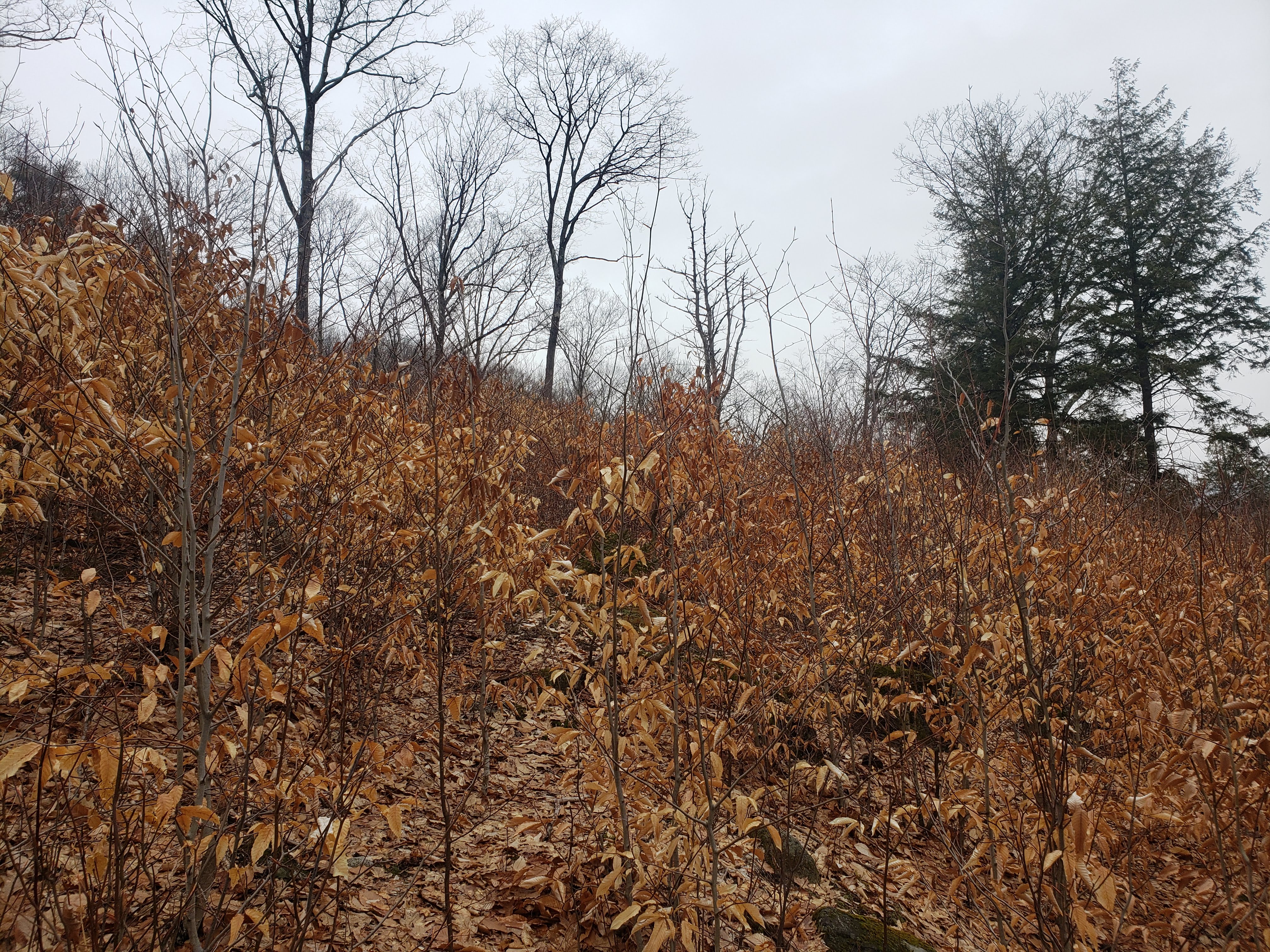Submission information
Oak regeneration harvest at Hope Forest in Danbury, NH
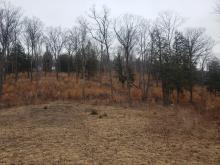
A commercial timber harvest was carried out in the fall of 2014 after an oak mast year. Prescriptions included two low-density shelterwood areas (12 and 18 acres in size), and five large group openings (1-2 acres in size). The goal was to regenerate oak along with a mixture of other desirable hardwood species.
Site Location
Danbury, New Hampshire
South-facing slope with fine sandy loam soils
43.493356
-71.891636
You cannot drive right to the harvest area, but parking is possible off Roy Ford Road here (https://goo.gl/maps/XmJbwNyp8MLjrtJB9) by the Forest Society property sign and gate. The access road used for the harvest is on land owned by an abutter and is not usable for the general public. From the Forest Society gate and sign, you can walk for a while on a trail, but then will need to bushwack the rest of the way to the landing and harvest areas.
Link to the location of the landing: https://goo.gl/maps/yiP6gUA8ecbCxoDXA
Landing lat/long: 43.493183, -71.891398
by foot
Society for the Protection of NH Forests
+1 603-224-9945
Stand Information
100 acres
Northern Hardwoods
Semi-Rich Appalachian Oak-Sugar Maple Forest
Prior to harvest, the forest was a mature, closed canopy stand with trees mostly in the small and large sawtimber size classes
Lyman-Tunbridge-Rock Outcrop complex
Pre-treatment Conditions
The entire property was once cleared and used as farmland, with the lowlands used for crops and other areas used as pasture. The property has been a registered Tree Farm since 1970. The Forest Society acquired the property in 1991, and conducted previous timber harvests in 1993 and 2008.
red oak, sugar maple, white pine, hemlock, red maple, white ash, beech, white birch, red spruce
Quercus rubra (northern red oak)
37%
Acer saccharum (sugar maple)
24%
Acer rubrum (red maple)
9%
Basal area of 109 sq ft per acre
Silviculture Prescription
The Emily & Theodore Hope Forest is owned by the Society for the Protection of NH Forests (Forest Society), a non-profit land trust and forestry organization dedicated to protecting the state's most important landscapes while promoting the wise use of its renewable natural resources. The Hope Forest was donated to the Forest Society in 1991, and previous timber harvests were conducted in 1993 and 2008. An updated forest management plan written in 2013 was the basis for the harvest conducted in the fall of 2014. One goal of the harvest was to take advantage of the excellent red oak mast year and attempt silviculture to regenerate red oak, which grows well on the property. The Forest Society ran a timber harvest tour for the public while the harvest was active.
Multiple prescriptions were carried out: (1)Two low-density shelterwood harvests (12 and 18 acres in size) were conducted on the lower slopes nearby the landing. Mostly red oak trees were reatained, at an approximate residual basal area of 40 sq ft per acre. One goal was the regeneration of red oak. (2) Five group openings (1-2 acres in size) were conducted in the higher elevation areas, with the goal of regenerating red oak. (3) Thinning and small group selection harvesting were carried out in several other areas, with the goal of improving the residual growing stock of the stand, and encouraging desirable species and individual trees.
Preserve water quality, especially that of the Beverly, Walker and Frazier Brooks, which are part of the headwaters to the Blackwater River; Protect ecologically sensitive areas located within the forest; Protect and safeguard historically significant sites within the property; Improve the commercial timber growing stock within the forest of the property; Harvest forest products when ecologically and economically appropriate; Maintain or increase the biodiversity on the property; Provide a diverse mixture of wildlife habitat; & Provide recreational opportunities for fisherman, hunters, and other passive users of the property
Red oak was the primary species targeted for regeneration. We timed this harvest to coincide with a mast year for oak, with machinery driving over fallen acorns during the harvest to push them into the soil for improved germination.
shelterwood
- forest health
- climate change
- browse pressure
- carbon
- landscape context
Cut-to-length harvester and forwarder
Post-treatment
yes
yes
Low-density Shelterwood (12 & 18 acres)
Sept 2015 (one year post-harvest) - carpet of oak seedlings covering many parts of the shelterwood harvest area. The acorns that fell in the fall of 2014 germinated and were doing well. So far so good.
May 2018 (3.5 years post-harvest) - Dense understory of hardwood saplings is now 2 or 3 feet tall in most places. Oak stems are still well represented, and are just as tall as any of the other species. Some show signs of browse.
March 2022 (7.5 years post-harvest) - Hardwood regeneration is now 6-10 feet tall most places. The tallest species are now hop hornbeam and beech. Oak is still present, but it shows significant signs of past browse damage, and is not as tall as the remaining species. Most oaks are 4-6' tall, and may still win out in competition if they are spared significant browse damage for a growing season or two. A few oak stems were noted out of deer browse range (10-12' in height), but these were the exceptions as opposed to the rule.
Group openings (1-2 acres)
March 2022 (7.5 years post-harvest) - these openings are growing in significantly slower than the low-density shelterwood areas, with more serious browse damage. There are many oak stems in these areas, but look like bushes, with browse damage keeping them about 2' tall.
Miscellaneous
Red oak silviculture
no
Statistics
Contact Information
Gabe Roxby
Field Forester
Society for the Protection of NH Forests
Concord, New Hampshire. 03301
United States
Founded by a handful of concerned citizens in 1901, the Society for the Protection of New Hampshire Forests is now one of the country's most effective statewide land conservation organizations. Our mission statement, developed in 1904 is: "We are a forestry association seeking to perpetuate the forests of New Hampshire through their wise use and their complete reservation in places of special scenic beauty." As a non-profit membership organization, the Forest Society is dedicated to protecting the state's most important landscapes while promoting the wise use of its renewable natural resources.
Supplementary Content
